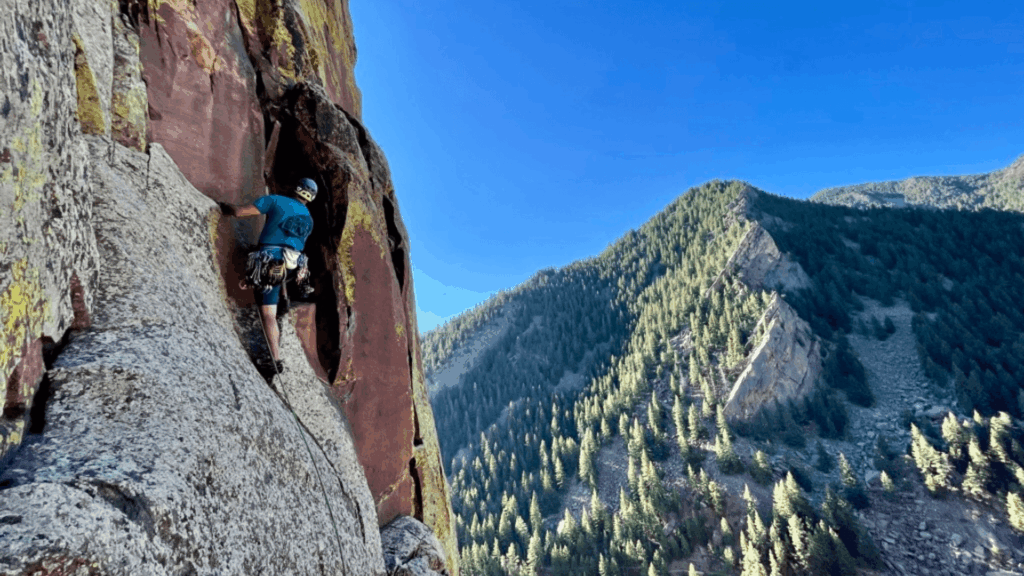Overcoming Fear: My Journey to Conquer a Challenging Climb.
Overcoming Fear: My Journey to Conquer a Challenging Climb.

Fear is a powerful force. It can protect us from danger, but it can also hold us back from incredible experiences. For many years, I found myself trapped by fear—fear of heights, fear of failure, fear of the unknown. Yet, when I finally decided to confront these fears head-on through a challenging climb, I embarked on a journey that transformed me deeply, both physically and mentally.
In this blog, I want to share my personal story of overcoming fear on the mountain, the lessons learned, and why embracing fear can lead to growth and empowerment.
The Decision: Facing Fear Instead of Running Away
I had always admired climbers from a distance, fascinated by their courage and skill. But whenever I looked up at a towering rock face or steep mountain slope, my heart raced, and doubts flooded my mind. The fear of falling, of not being strong enough, or of losing control was overwhelming.
One day, I realized that if I continued to avoid challenges, I would miss out on so much life had to offer. So I signed up for a guided climb of a well-known, yet demanding, route in the Rockies. It was a small but significant step toward facing my fears rather than letting them define me.
Preparation: Building Confidence Through Training
Fear often thrives in the unknown. To combat this, I committed to serious preparation. I worked with experienced climbers, learned essential techniques, and trained my body to endure physical demands.
This phase was critical—not just physically but psychologically. Each session built my confidence and chipped away at anxiety. Knowledge and practice turned abstract fears into manageable challenges.
Lesson: Preparation is a powerful antidote to fear. The more equipped you feel, the less daunting the challenge becomes.
The Climb Begins: Confronting Fear Step by Step
On the first day of the climb, my nerves were intense. The route was steep, with sheer drops on either side. Every step felt like a test. My hands trembled as I gripped the rocks. But I reminded myself: one move at a time.
The early stages were about acclimating to the environment and proving to myself that I could handle the physical strain. Slowly, the initial panic gave way to focus. I learned to breathe deeply, tune into my body, and stay present.
When Fear Strikes: The Near Panic Moment
Midway up, we encountered a tricky section that required a precarious traverse across a narrow ledge. My heart pounded. The drop below was dizzying. A surge of panic threatened to freeze me.
In that moment, I realized that fighting fear directly often makes it worse. Instead, I acknowledged it: “Yes, this is scary. But I am prepared. I can do this.”
Taking slow, deliberate breaths, I shifted my weight carefully and made it across. The relief was immense—and so was the realization that fear need not control me.
The Power of Support: Trusting the Team
Climbing is often portrayed as a solo pursuit, but it is deeply collaborative. My guides and fellow climbers were anchors—offering encouragement, advice, and calm.
Knowing that I wasn’t alone made a huge difference. When fear returned, a kind word or a steadying hand helped me regain composure.
Lesson: Don’t underestimate the value of community. Facing fears is easier when you have support.
Mental Strategies: Visualizing Success
Along the climb, I practiced mental techniques I had learned in preparation. Visualization became a powerful tool: picturing myself completing the route safely and confidently helped reframe my mindset.
Focusing on positive outcomes, rather than worst-case scenarios, reduced anxiety and boosted motivation.
The Summit: A Moment of Triumph and Transformation
Reaching the summit was both exhilarating and humbling. Standing on top of the mountain, looking out over vast landscapes, I felt a surge of pride—not just in conquering the climb but in overcoming fear itself.
The climb wasn’t just a physical achievement; it was a metaphor for life’s challenges. Fear remains, but it no longer dictates my choices.
Lessons Beyond the Mountain
- Fear is Natural and Manageable: Accepting fear as part of the process reduces its power.
- Small Steps Lead to Big Changes: Breaking down challenges into manageable moves makes fear less overwhelming.
- Preparation Builds Confidence: Knowledge and practice are the best weapons against fear.
- Support is Essential: Lean on others when the climb feels too steep.
- Mindset Matters: Positive mental strategies transform fear into motivation.
Moving Forward: Applying What I Learned
Since that climb, I’ve approached challenges differently—in travel, work, and personal growth. Fear no longer paralyzes me but signals areas for growth. Each time I face fear, I remember the mountain and the strength I discovered.
Conclusion: Your Fear Can Be a Catalyst for Growth
If you face fear—whether it’s heights, new experiences, or uncertain paths—know that you are not alone. Confronting fear takes courage, preparation, and support. But the rewards—confidence, resilience, and a deeper understanding of yourself—are profound.
Embrace fear as a teacher rather than an obstacle. Your toughest climbs may lead to your greatest transformations.


